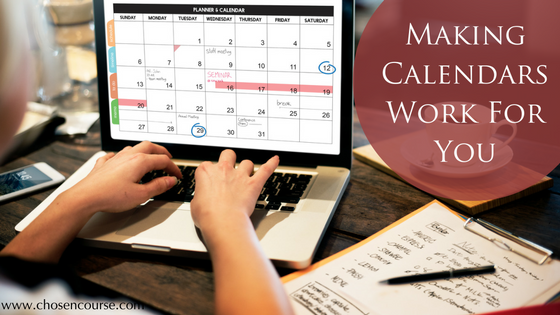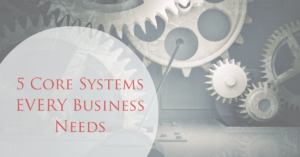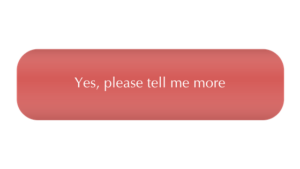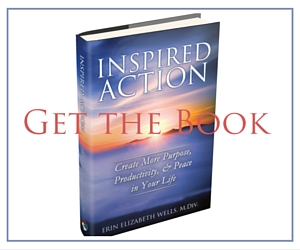It’s just about time to pick up your new calendar! Personally, I love getting my big wall calendar for the next year in the mail because it sparks a fire of excitement and creativity for me about the upcoming year. I’ve written in the past about my annual process of marking up my big wall planning calendar with all the important events for the year: vacations, birthdays, anniversaries, etc, as well as business travel, speaking events, and major project or program launch milestones.
It’s a great time of year for thinking big, but it’s also a great time for thinking strategically about what you’re doing well and what you could be doing better. For instance, are there certain systems that you could optimize in your life or business and make daily living significantly easier? Today, let’s talk about calendars and how you might be able to use these tools & systems even better in the upcoming year.
I know very few adults who don’t use a planner or digital calendar daily (and those who don’t, like our house repair contractors, are usually the ones who miss appointments.) Which means that most adults are adjusted to using a some type of calendar tool to manage their time and availability.
However, there are still several best practices that aren’t so universal which might help you become even more effective with (and less confused by) your calendar. So, let’s explore some of those together…
One Master Calendar
Just like in Lord of the Rings, there’s one ring to rule them all. Same needs to be true for your calendar too. There needs to be ONE master calendar that reigns supreme. It could be your smart phone calendar, your planner, or your fridge calendar, but it needs to be clear that there’s one specific place where all your appointment information will live.
Typically, I recommend that your Master calendar is portable (smart phone or planner) because then you will always have it available when you’re in the doctor’s office to make that next appointment or want to schedule a networking coffee with a business friend who’s calling. This makes your planning and communication steps much easier since you don’t have to “guess” when you’re free then remember to check and confirm when you get back to your office or home. Relying on your memory for appointment information is very dangerous territory and makes your life way more stressful than it needs to be.
Many entrepreneurs may also be adjusting from their corporate lives when they used to have a work calendar and a personal calendar. Their work calendar managed their 9-5 day, and their personal calendar tracked all their weekends and evenings. I find that this separation isn’t necessary or particularly useful as an entrepreneur. Integrating your life is one of the huge benefits of being an entrepreneur, and allowing yourself the flexibility to use your time in the best way for you. It’s all your life and you’re going to be living it in a continuous time ribbon, so why create extra systems and potential for confusion.
Digital vs Paper
There are certain times when a paper planner can be a completely viable system. Certainly if you’re still a solopreneur and don’t have a team that you need to collaborate with or share time information. And, when push comes to shove I’ve seen a few members of my former team at Living Peace who were highly attached to paper calendars find acceptable hybrid solutions in which the paper planner was their master calendar and the team’s digital calendar was updated with essential information/availability as needed (but it definitely requires more time and work to do this.)
That’s why if your world involved interacting with team members (or even a partner or family members) I really encourage you to consider a digital calendar. Heck, one of the things I love most about digital calendars is that I can check my husband’s availability before scheduling dinner for us with friends, and since he has both a personal and work calendar (poor corporate guy.) He’s shared viewing access to both with me so that I can ensure he’ll have time to make that evening appointment or join me for our next OB visit (BTW: did you miss our announcement last week that we’re having a baby in June?)
When I was managing scheduling for my team of 4-6 organizers with my previous company, the digital calendar system was a necessity. And, if that kind of growth is in your future, then you might want to start getting comfortable with your chosen digital calendar system now.
Calendars & Scheduling Tools
Another wonderful solution that’s appeared in the last few years are digital scheduling tools that help people find time on your calendar without tons of back-and-forth emails. There are tons of different ones that I’ve used or explored. (Calendly.com is my current favorite.) However, all of them require you to have your main calendar be digital. Part of their magic is to sync with your main digital calendar (google, ical, or outlook usually) and check for your availability on upcoming days before using the rules you input to serve up possible time slots to people.
Using scheduling tools makes booking potential client calls tons easier, which can speed up the sales process. You can also use it for current clients (if you do 1:1 coaching or consulting) as well as for networking meetings. I’ve even used it occasionally for personal scheduling too by creating a “Dinner” event with appropriate parameters and limitations to ensure travel time and sending that link to a friend who’s been asking to get together. It works just the same!
So, if you’ve been doing all your scheduling manually, the old-fashioned way, then perhaps this is the year to consider integrating a scheduling tool into your calendar system.
Planning Calendars
There can still be a place for that big paper or dry-erase wall calendar in your world however. As I said at the beginning I LOVE mine, and in fact I have three different wall calendars around my house (not including the one in my husband’s office.) Here’s the difference… these calendars aren’t for appointments. They’re purely for long-term planning and big events “at-a-glance.” So, this isn’t where I write client calls, dinners with friends, or doctors appointments. It is where I put vacations, birthdays, holidays, and anniversaries.
We have a monthly paper calendar on the refrigerator. I have a monthly wall calendar above my desk, and I have a yearly dry-erase calendar on the wall of my office. Essentially, they all have the same information on them and are only there for quick easy reference and long term planning. (Note: the kitchen one also has the schedule for our town’s bi-weekly recycling and our house cleaners dates, so that we can remember when these frequent (but repetitive) events happen.)
Now, let me clarify, virtually all of the information on these wall calendars is also in my master digital calendar (not the recycling days, but most everything else.) However, I find it so much easier to think about longer term or seasonal planning when I can see a whole month or the year in advance, so these calendars definitely have their role. They just aren’t a great place to run the day-to-day. Heck, there’s not enough room in those little blocks for all the things on my calendar, and my schedule changes so frequently it would become scribble land or I would have to start buying white-out stock.
Birthdays and holidays typically don’t change however, and vacations only do rarely. So, usually I can set these planning calendars up in December/January and only make minimal adjustments throughout the year. It’s a system I’ve been using for at least a decade by now and feel like it works exceptionally well.
Next Steps
Perhaps now is the best time to consider what tool you will use for your Master Calendar this year. (If you’re a dedicated paper planner person, then you might want to take a look at my review of some solid paper planners from last year.) Otherwise, perhaps this is the year when you finally make the jump to using your digital calendar (after all it’s right there on your smart phone waiting for you…)
Choose the tools that are going to be best for you looking into this future year, and consider if you’re ready to make some modifications to your personal calendar and scheduling system.
If you’re having that moment when you’re recognizing that there might be several systems in your business that could use some attention for the new year, then you might want to join me for our upcoming free webinar “5 Core Systems Every Business Needs.”
5 Core Systems EVERY Business Needs
Without these 5 core systems you are likely wasting time, money, and TONS of energy.
Did you start your business with a “fly-by-the-seat-of-my-pants” approach? I know I certainly did with my first business over a decade ago. However, as your business grows, there’s comes a point when you have more clients, projects, and irons in the fire, and soon you find yourself confused, exhausted, and dropping the ball.
That’s when you know that you need systems. Clear, consistent, and (preferably) automated ways to move your work forward and make things easier. That’s why you definitely want to make time for this HUGELY VALUABLE webinar.
You will learn:
- Why systems are the key to your freedom
- The 5 Core Systems that EVERY Business Needs (and the exact tools you can use to help you)
- How systems can help you bring in more MONEY, improve LIFE BALANCE, regain TIME, and become more PROFITABLE
- How to start creating better systems in your business immediately
Systems are the road to freedom in your business including more time, more balance, and more joy doing the things you love in your business and simply overseeing the rest.
Watch the recently recorded webinar and learn the 5 Core Systems that will give you more freedom in your business!





